What is Wood Flour?
Wood flour is an organic powder obtained by extremely fine grinding of dry wood. It has particle sizes less than 1.2 mm, and its color depends on the wood species — from light to dark brown. It is produced from both softwood and hardwood (most often pine, spruce, birch, beech), depending on its technical purpose. The flour’s structure is dominated by cellulose, hemicellulose, and lignin fibers.
It is worth noting that wood flour is not a simple by-product of woodworking (like sawdust or shavings). Its production requires extremely fine grinding, which is achieved using specialized equipment.
Where Wood Flour is Used
Wood flour is used in dozens of industrial sectors thanks to its adsorption, structuring, binding, and thermal insulation properties. It is used as a filler, additive, base, or raw material in the following fields:
🔧 Industry and Construction
- A component in the production of pigment titanium dioxide (TiO₂).
- An additive to welding electrode coatings (electrode cellulose).
- A component of plaster, finishing, and construction mixtures (including putties, concretes, mortars, pastes).
- An additive to concretes, drywall boards, composite and road surfaces.
- A filler in natural and synthetic adhesives (including parquet and roofing mastics, sealants).
- Raw material for molding mixtures in metal casting.
- An additive in abrasive and porous products, especially lightweight sanding materials.
- An additive in burn-out mixtures for ceramics and bricks.
🧪 Chemicals, Polymers, and Composites
- A base for press powders, molding compounds, and compounds based on thermosetting resins (e.g., phenoplasts).
- A component in compounds based on epoxy, polyester, and other synthetic resins.
- A filler for natural and synthetic linoleum, lincrusta.
- Raw material for the production of thermoplastic wood-polymer composites (WPCs).
- A base for xylolite (a wood-based composite material with magnesium binder).
💥 Energy, Explosives, Metallurgy
- A component in the production of certain types of explosives.
- An additive in the manufacture of steels and ferroalloys.
- Raw material for drilling fluids and plugging mixtures used in oil extraction.
- Raw material for filters and filtering materials, including air and liquid purification systems.
- A base for sorbents, including those used for oil spill remediation on roads, water, and soil.
- Raw material for activated carbon production.
- A component in the production of fuel briquettes (together with lignin, husks, peat, etc.).
🧴 Cosmetics, Polishing, Cleaning
- A soft grinding and polishing material for tumbling fittings, metal products, bearings.
- A component in cleaning agents for leather and fur (as a mild abrasive).
🌿 Agriculture and Environment
- An additive to compound feeds (as a fiber source and structuring agent).
- A component of soil conditioners (a loosener for heavy soils when mixed with lime or chalk).
- A base for mushroom substrates (for growing champignons, oyster mushrooms, etc.).
- Raw material for bio-absorbent bedding for animals (e.g., granulated sawdust fillers).
- An additive to tanning extracts (fir, oak, juniper).
- A component in smoking agents for fish and meat (especially for flavored sawdust production).
This list is not exhaustive — wood flour constantly reveals new possibilities in related fields due to its eco-friendliness, affordability, and multifunctionality.
What Wood Flour is Made From
The main raw material for wood flour production is waste from the forestry and woodworking industries. Most often these are wooden scraps, sawdust, and wood chips obtained from firewood. These resources undergo several stages of crushing, drying, and cleaning, resulting in a fine powder of uniform fraction — wood flour. Softwood, such as pine or spruce, is considered the most suitable due to its ease of processing, stable physico-chemical properties, and low resin content.

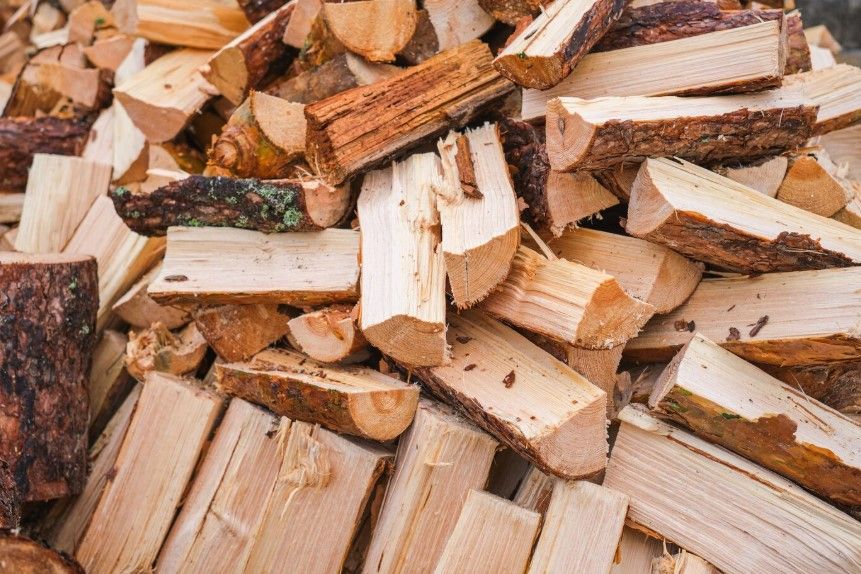
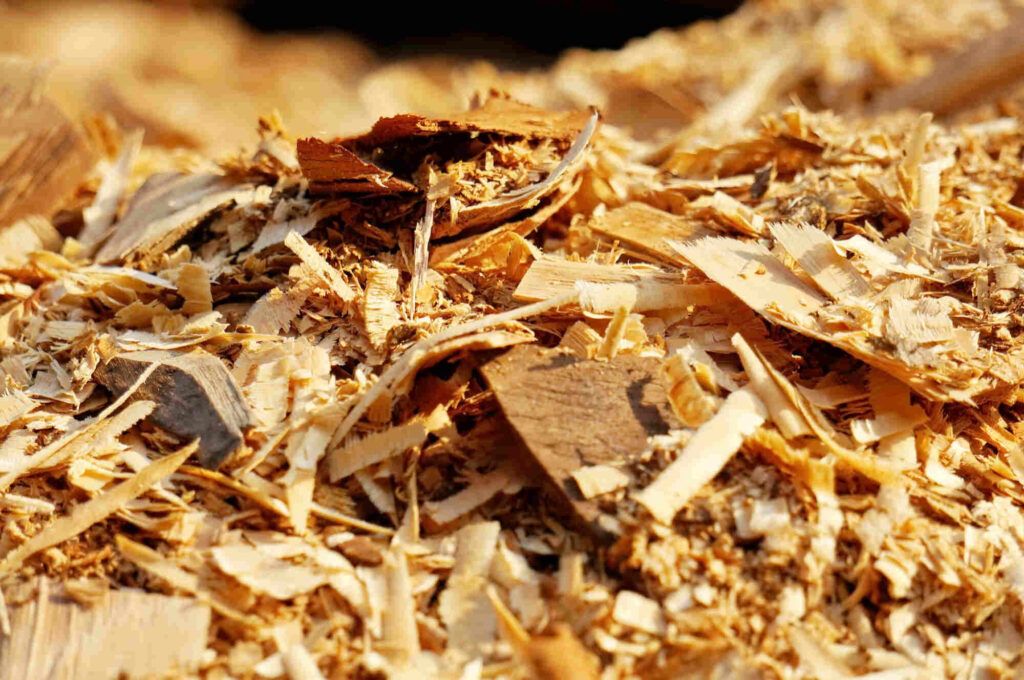

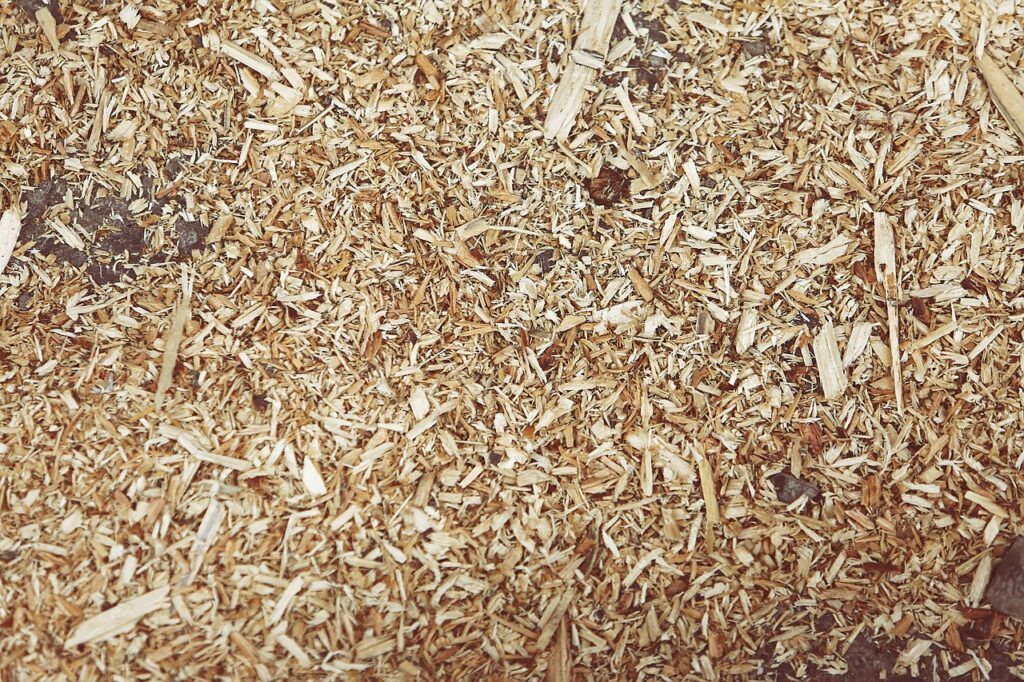
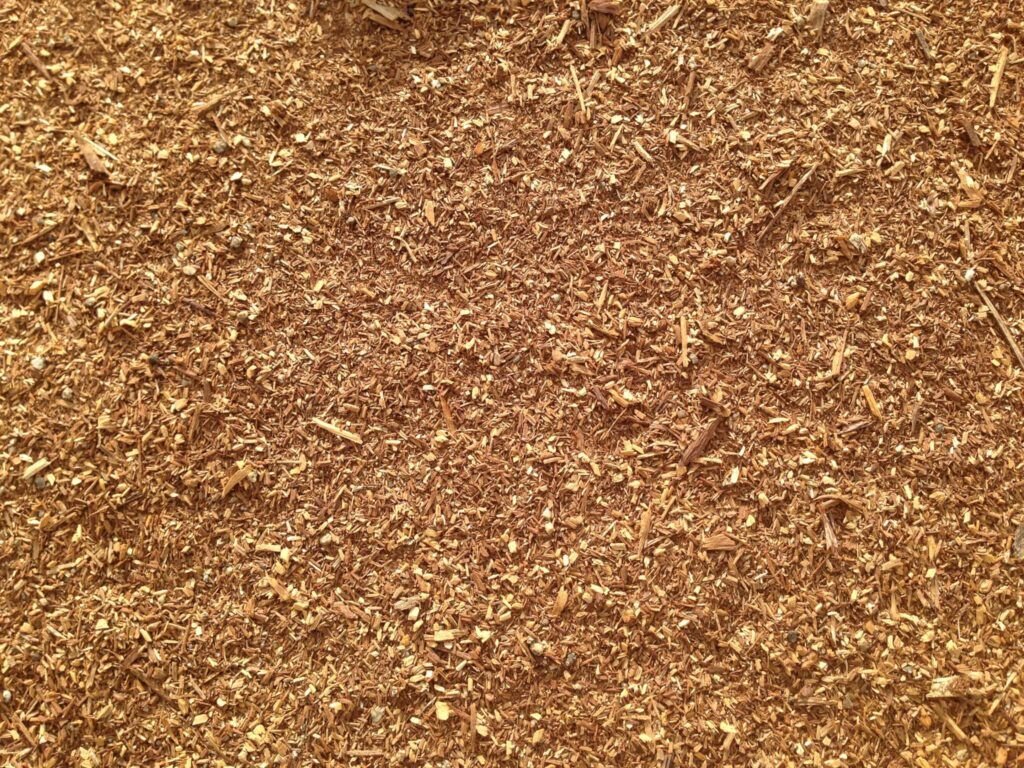
With the advancement of recycling technologies and the pursuit of zero-waste production, the range of raw materials used for wood flour production has expanded in recent years. Increasingly, it includes other types of plant biomass: straw, stems of agricultural crops, grain husks, nut shells, as well as waste from cardboard and paper products. Although such raw materials differ from traditional wood in composition and properties, they are effectively used for producing flour for technical or energy purposes, including biofuels, fillers, and sorbents.
Wood Flour Production
Main Stages:
- Sorting of raw material (wood waste, sawdust, shavings).
- Drying to moisture content <12%.
- Grinding (disc or hammer mills, sometimes — ball mills for ultra-fine grinding).
- Separation and fractionation.
- Packing — into bags, big bags, or silos.
For special needs (pharmaceuticals, food industry), additional cleaning, sterilization, or vacuum sieving may be applied.
Equipment for Wood Flour Production
Various milling units and crushing-drying complexes are used for wood flour production, adapted for processing relatively soft raw materials like wood. Since wood is not among the hardest materials, many types of mills can be used for its grinding — from simple impact-mechanical mills to more complex air-sieve systems. The choice of a specific machine depends on the required fineness, type of raw material, and the final purpose of the flour.
Grinding of wood mass can be performed in one or several stages. Some mills have built-in classifiers that immediately separate material by particle size, while other systems use external air or mesh classifiers for this purpose. Wood flour production units may also include drying modules that provide the required product moisture for further use, such as in the production of polymer composites or adhesives.
The output of such milling units varies — from tens of kilograms to several tons of wood flour per hour, allowing the technology to be adapted for both small-scale and large-scale operations. Modern equipment has a compact design, reducing the need for large production areas and is characterized by high energy efficiency and uniformity of particle size distribution.
However, the efficiency of such equipment depends not only on its type but also on design solutions that take into account the specifics of wood raw material. The manufacturer’s experience specifically in the wood flour production field plays a key role in ensuring stable quality and productivity.

Main Properties of Wood Flour
Wood flour is a fine powdered product formed by grinding wood to particle sizes generally not exceeding 1.2 mm. Its physical and technological properties make it a universal material for use in dozens of industrial sectors. Key parameters include particle size, moisture content, bulk density, color, sorption capacity, and behavior under heat.
The color of wood flour varies depending on the wood species: from light straw (e.g. from pine) to dark brown (typical for hard deciduous species). Particle shape is irregular due to the structural heterogeneity of wood and the nature of mechanical grinding (impact, shear, compression). This shape ensures good adhesion of the flour in composite materials.
Fractional composition of wood flour can vary significantly depending on the milling method and classifier type (sieve, air, etc.). According to GOST 16361-87, there are different grades of wood flour (grade 80, 120, 180, etc.) determined by sieve analysis. The standard moisture content is about 8%, but for some applications, such as in thermoplastic wood-polymer composites (WPC), it must be reduced to less than 1%, which requires special drying.
The bulk density of wood flour is usually in the range of 100–220 kg/m³, and for the most common brands – 100–140 kg/m³. This parameter is important for transportation, storage and accurate dosing in industrial processes.
Due to its naturalness (without chemical impurities), wood flour retains the chemical composition of the original wood, which allows it to be considered as an environmentally friendly filler or additive. In addition, the material has pronounced sorption properties and thixotropic behavior – the ability to change consistency under the influence of effort (smeared, but not flowing), which is valuable, for example, in the composition of adhesives, sealants or mastics.
On the other hand, wood flour is a fire-hazardous material. It ignites in air at temperatures above 200°C, and the autoignition temperature of the aerosol is about 430°C. At the same time, the lower concentration limit of dust explosion is 11.2 g/m³, so it is important to take into account fire and explosion safety requirements in production, especially when working with fine fractions.

Brief Overview of Main Physicochemical Characteristics
- Moisture content: 6–12% (depending on product requirements)
- Bulk density: 180–300 kg/m³
- Ash content: 0.2–1.0%
- pH: neutral or slightly acidic (5.5–7.0)
- Calorific value: up to 4500 kcal/kg
These characteristics make wood flour extremely versatile for use in various environments: water-based, oil-based, acidic, and even chemically aggressive.
Classification by particle size:
- Coarse — 0.5–1.0 mm
- Medium — 0.2–0.5 mm
- Fine — 0.1–0.2 mm
- Ultrafine — less than 0.1 mm
Fine-dispersed wood flour is predominantly used due to its large surface area and superior adsorption properties.
Want to see a video of material grinding on our equipment? Visit our YouTube channel:
Ukrainian Regulatory Documents and Main Requirements for Wood Flour
- DSTU 16361-87. Wood flour. Technical specifications.
- DSTU 16362-86. Wood flour. Test methods.
According to the standards DSTU 16361-87 and DSTU 16362-86, wood flour must meet certain technical specifications to ensure its quality and suitability for various industrial applications.
Key Material Requirements – Wood Flour
DSTU 16361-87 defines nine wood flour grades: 120, 140, 160, 180, 200, 250, T, 560, and 1250. Each grade is intended for specific applications.
- Grades 120 and 160 are used in the production of light-colored phenoplasts.
- Grades 140 and 180 — in the production of phenoplasts, industrial explosives, polymer composite, and construction materials.
- Grade 200 — for the production of alkyd linoleum, construction materials, and in starch and molasses production.
- Grade 250 — in the production of industrial explosives.
- Grade T — for the production of pigment titanium dioxide.
- Grades 560 and 1250 — in the production of filter elements and catalysts.
Moisture content of wood flour according to the standard must not exceed 8%. However, for certain applications such as thermoplastic wood-polymer composites, moisture must be below 1%.
Bulk density of wood flour depends on many factors such as moisture, particle size and shape, and wood species, and ranges from 100 to 220 kg/m³. The normative value for grades 120–180 is 100–140 kg/m³.
DSTU 16362-86 sets out the methods for testing wood flour, including determination of moisture content, ash mass fraction, presence of ferromagnetic and other impurities, as well as particle size distribution. Specifically, moisture is determined by drying a sample to constant weight at (103±2)°C.
It is important to note that wood flour must be made from high-quality raw material, free from foreign impurities, which ensures stable physicochemical properties and safety in use.
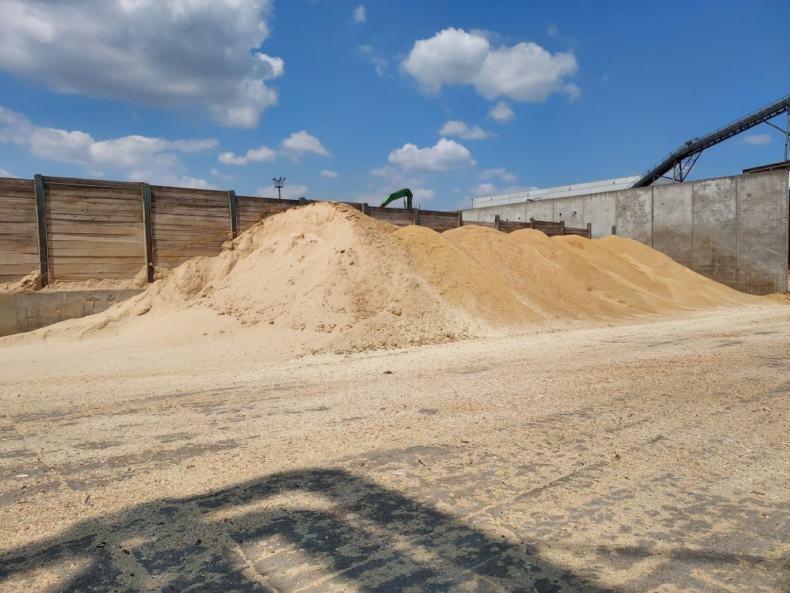
Challenges and Risks in the Production and Storage of Wood Flour
The production and storage of wood flour involve a number of technical challenges and potential hazards that must be taken into account at all stages of the technological process. The main one is the high fire and explosion hazard of wood dust, especially in aerosol form. Fine wood dust ignites easily in the air at temperatures above 200 °C, and the autoignition temperature of the aerosol is around 430 °C. The lower explosion limit for such dust is just 11.2 g/m³, so even a small accumulation of fine particles in the air in a poorly ventilated room can lead to an explosion.
Another difficulty is the tendency to self-ignite during storage, especially if the flour is moist or contains oil residues. Like other organic bulk materials (sawdust, grain, coal dust), wood flour can smolder slowly inside large volumes and, under certain conditions, shift into active combustion. Therefore, it is crucial to control the moisture content of the raw material both at the inlet and outlet of the mill, as well as to maintain dry, cool, and well-ventilated storage conditions.
There are also technological issues related to dust formation from wood flour. During loading, transportation, or packaging, dust settles on equipment, causes wear and tear, and can affect workers’ health. Therefore, production lines are designed with local exhaust systems, filters, and dust collectors, and personnel must work using personal protective equipment, including respirators.
In addition, inconsistency in particle size distribution, which may result from poor milling or an imperfect classifier, reduces the quality of the final product and limits its suitability for certain industries (e.g., phenoplast or compound production), which require stable microdispersion. Thus, grinding technology control and optimal mill operation are critically important factors.

Storage of Wood Flour
Proper storage of wood flour is essential for preserving its quality, maintaining stable physicochemical properties, and ensuring safe use. The most important requirement is a dry, cool, and well-ventilated room. Air humidity in the storage area should be low, as increased moisture can lead to clumping, microbial spoilage, and even self-ignition of the flour. Therefore, wood flour should not be stored near moisture sources or in non-ventilated warehouses.
The flour is stored in sealed bags, big bags, or silos made of materials that do not attract dust and do not absorb moisture. Particular attention is paid to dust accumulation in the room, as wood dust in the air is potentially explosive. Warehouses must be equipped with ventilation systems, dust collectors, and temperature control devices. Regular inspections for overheating, signs of smoldering, or moisture condensation are also necessary. All these measures ensure the safe storage of wood flour without loss of properties and reduce the risk of emergencies.
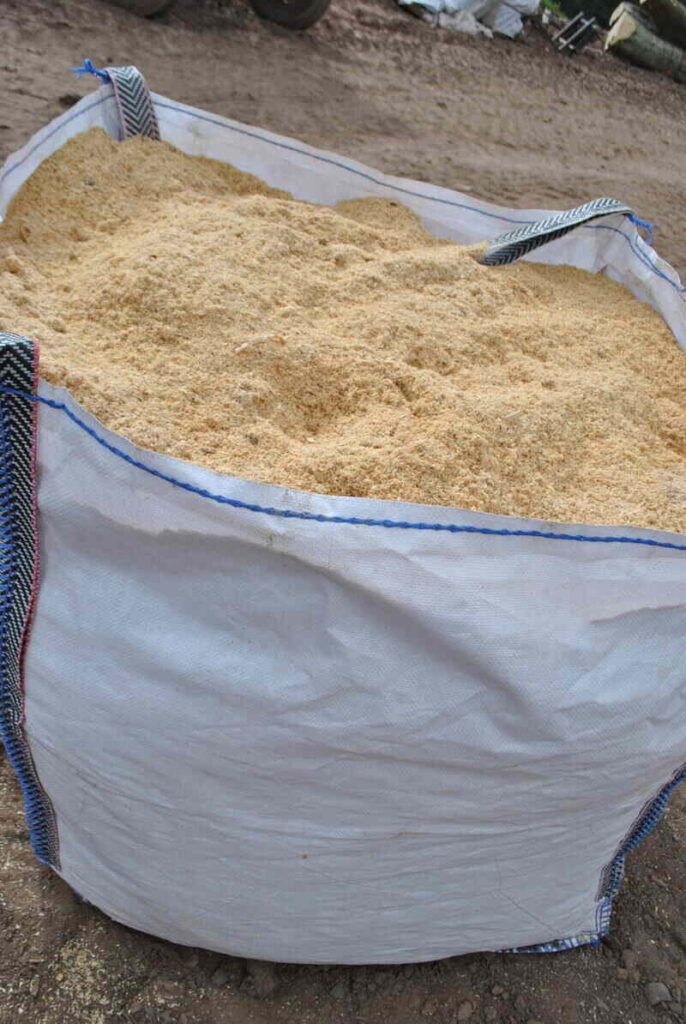
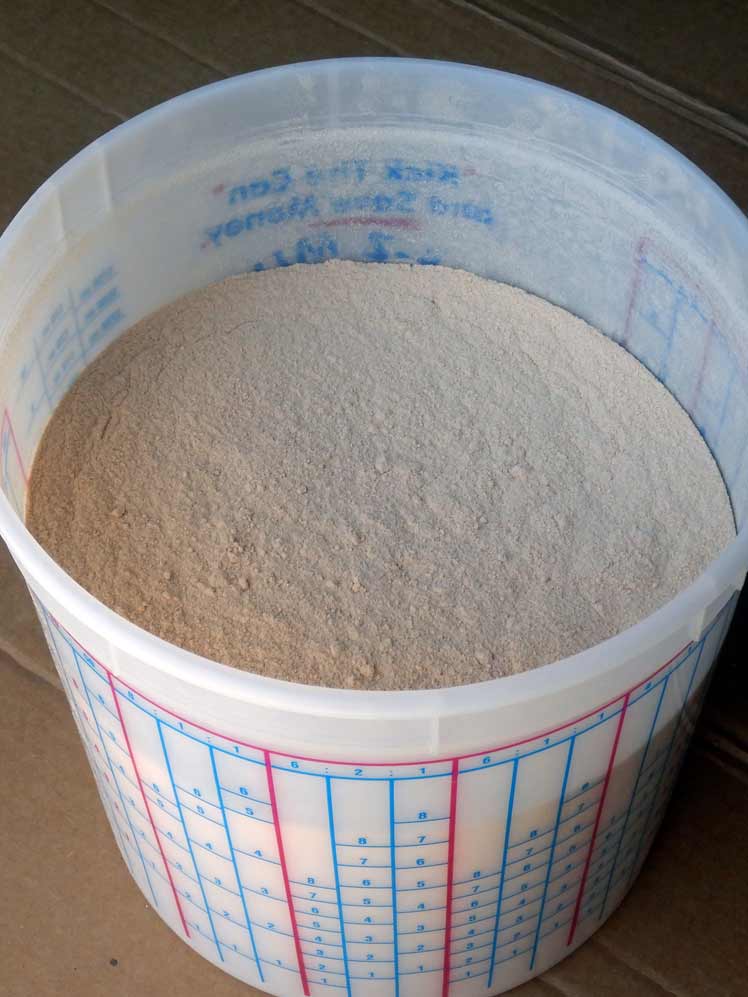
Transportation of Wood Flour
Transporting wood flour requires compliance with certain conditions to maintain product quality and ensure safety. Packaged flour is usually transported in bags combined into transport units on wooden pallets. Delivery is carried out using covered transport — railcars, trucks, or sea containers. A standard railcar can hold up to 20 tons of flour, and a 40-foot container about 16 tons, making wood flour convenient for long-distance transport.
For large volumes, a cost-effective solution is bulk transportation in specialized vehicles — flour trucks, both automotive and rail. These methods help optimize costs and minimize losses during delivery. Although wood flour is a low-cost product, its low density and stability during storage allow logistics to be easily adapted to customer needs without increasing transport costs.
Key Advantages of Wood Flour
✅ High environmental friendliness and biodegradability
✅ Low cost and raw material availability
✅ Good adhesion to polymer materials
✅ Improved physical and mechanical properties of mixtures
✅ Excellent sorption capacity
✅ Applicability in food and pharmaceutical industries (with appropriate processing)
Conclusion
Wood flour is a multifunctional raw material that combines natural origin, efficiency, and cost-effectiveness. Thanks to its broad range of physicochemical properties, its applications span more than a dozen industries — from plastics to metallurgy and agriculture.
Modern wood processing technologies make it possible to produce wood flour with different particle sizes, moisture levels, and purity — tailored to specific production needs. It is an example of how wood waste can be transformed into a high-value, in-demand, and eco-friendly product.
Given the number of application areas, it is clear that in Ukraine, wood flour production is a promising industry that will continue to grow.
For this industry, Ecopolymer has developed an efficient crushing and drying complex. You can view its specifications by visiting the complex’s page:

